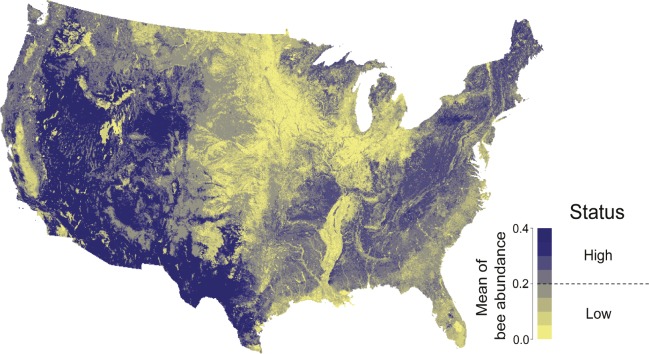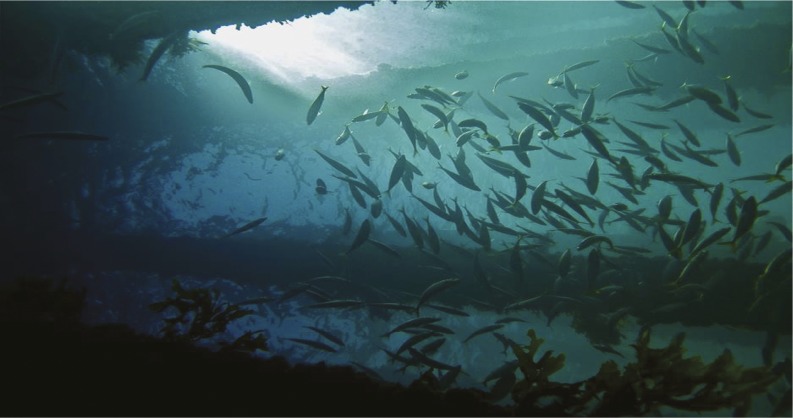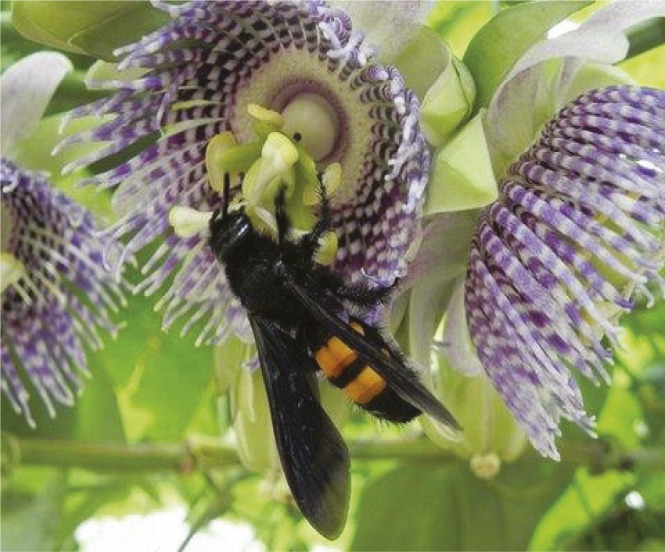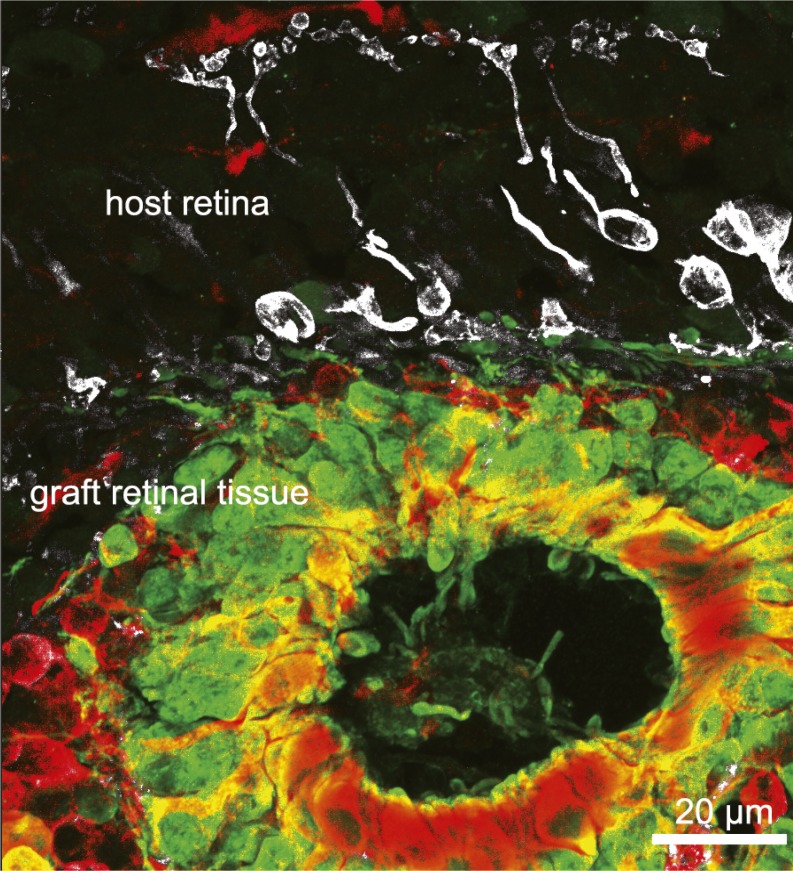Dog domestication may have enriched harmful genetic changes
Welsh Springer Spaniel. Image courtesy of Wikimedia Commons/Udo Tjalsma.
Domestication of dogs from gray wolves more than 15,000 years ago involved artificial selection, inbreeding, and population bottlenecks, but the precise effects of these demographic processes on the buildup of harmful genetic changes in dog genomes remain unclear. Clare Marsden et al. (pp. 152–157) analyzed the complete genome sequences of 19 wolves, 25 village dogs, which descended from indigenous dogs, and 46 domesticated dogs of 34 breeds, and found that domestication may have unwittingly raised the number of salient harmful genetic changes in dogs, compared with wolves. Population bottlenecks tied to domestication and breeding, rather than recent inbreeding, likely led to an increased frequency of deleterious genetic variation in dogs. Further, such deleterious variants were enriched in genomic regions targeted by selective sweeps, a sign of positive natural selection, suggesting that such variants may have piggybacked onto positively selected regions, which were also enriched in disease-related genes. Thus, the use of small populations artificially bred for desired traits may have led to an accumulation of harmful genetic variation in dogs. In addition to avoiding inbreeding, selective breeding programs, particularly those aimed at conserving rare and endangered species, may need to include and maintain large populations to minimize the inadvertent enrichment of harmful genetic changes, according to the authors. — P.N.
Mapping US wild bee abundance and declines
Relative wild bee abundance in 2013.
Like honey bees, wild bees are important crop pollinators that face threats including habitat loss, environmental pesticide exposure, and climate change. Following a 2014 US presidential memorandum calling for a national assessment of pollinators, Insu Koh et al. (pp. 140–145) integrated a wild bee habitat model, land-cover data, and expert knowledge to map US bee abundance and trends. The models, validated by available field data, suggest that wild bee populations likely declined in areas comprising 23% of the United States between 2008 and 2013, a decline associated with conversion of natural wild bee habitat into farmland. Further, the authors determined that 139 key counties, comprising 39% of US pollinator-dependent crop area, exhibit a mismatch between pollination supply and demand, with large areas of pollinator-dependent crops and low expected abundance of wild bees. The results suggest that these mismatches are greatest for crops that are most dependent on pollinators, including apples, blueberries, and peaches. The findings may help farmers and agricultural stakeholders develop management efforts to preserve wild bee populations and their pollination services in farmland, and help wild bee researchers focus attention on little-explored regions, according to the authors. — P.G.
Productivity changes in global fisheries
Fish feeding in coastal waters near Rapid Bay Pier, Australia. Image courtesy of Marine Photobank/Richard Wylie.
Marine fisheries provide a significant source of protein for more than half of the world’s population. The geographic distributions of many fish species have shifted in response to environmental changes, but whether the productivities of global fish stocks have also been affected is unclear. Gregory Britten et al. (pp. 134–139) examined a new database of global fish stocks for changes over time in the relationship between the spawning stock size and the annual production of offspring, a quantity known as recruitment. The authors found that globally, the maximum possible recruitment, or recruitment capacity, has decreased by 3% of its historical maximum per decade, on average. However, trends in recruitment capacity varied considerably between regions, with sharp declines in the North Atlantic and approximately neutral trends in the North Pacific. Observed changes in recruitment capacity correlated with changes in the abundance of phytoplankton, as measured by the chlorophyll concentration in the ocean. For groundfish such as cod and flounder, recruitment capacity also correlated with the historical level of overfishing. The results suggest that ongoing environmental changes and chronic overfishing have systematically compromised the productive capacity of marine fish stocks, and fishery management strategies may have to take these changes into account to maintain sustainable fisheries, according to the authors. — B.D.
Non-bee pollinators and crop pollination
Wasp (Synoeca sp.) visiting a passion fruit flower. Image courtesy of Catalina Gutiérrez-Chacón (University of Freiburg, Freiburg im Breisgau, Germany).
Non-bee insect pollinators such as flies, beetles, wasps, butterflies, and moths are often neglected by the scientific community and growers as ecosystem service providers. However, the global reliance on honey bees to pollinate the majority of crops is a risky strategy given major threats to the health of managed honey bee colonies. Romina Rader et al. (pp. 146–151) analyzed 39 field studies from five continents that measured the extent and role of non-bees, honey bees, and other bees in crop pollination. Specifically, the studies measured flower visitation frequency and pollen deposition per visit. The analysis revealed that non-bees were less effective pollinators than bees per flower visit, but because they visited a slightly higher number of flowers than bees, their overall pollination services were similar to those of bees. A subset of studies that measured fruit set found that both groups are required for optimal pollination services. The authors also found that non-bee insects are less affected than bees by loss of their natural habitats. According to the authors, non-bee insect pollinators play a significant role in global crop production and potentially provide insurance against bee population declines. — B.A.
Human gut-on-a-chip sustains microbiome
In addition to its constituent organs, the human gastrointestinal (GI) tract comprises a microbial ecosystem, whose function influences human health. Although disturbances to the gut microbiome likely contribute to chronic illnesses such as Crohn’s disease, ulcerative colitis, and small intestine bacterial overgrowth, the human GI tract has proven too complex to replicate with in vitro models. Hyun Jung Kim et al. (pp. E7–E15) devised a human gut-on-a-chip microdevice that can grow multiple species of commensal microbes in direct contact with living human intestinal epithelial cells and sustain the community for at least 1 week. The authors demonstrate that the model can reproduce results from past animal and human studies that suggested probiotic and antibiotic strategies for treating illnesses due to pathogenic bacteria in the gut. In addition, the authors used the human gut-on-a-chip microdevice to demonstrate that immune cells and a bacterial endotoxin combine to trigger proinflammatory cytokines that damage the villi of the small intestine and compromise the core barrier function of the intestinal epithelium. The study adds to the growing list of organs-on-chips, offering researchers the opportunity to study intestinal diseases and test new treatments. — T.J.
Retinal transplantation in primate models of retinitis pigmentosa
Possible integration of host bipolar cells (white) with graft retinal tissue.
Transplantation of mouse embryonic stem (ES) cell-derived retinal tissue in mice has suggested the potential of the approach for treating retinitis pigmentosa (RP), a genetic disease marked by gradual loss of retinal photoreceptors. However, reproducible primate models of retinal degeneration for such efforts are largely lacking. Hiroshi Shirai et al. (pp. E81–E90) transplanted human ES cell-derived retinal sheets into the subretinal space of a rat model of advanced RP, and found that the grafted sheets matured into well-organized layers with photoreceptor inner and outer segments and integrated with host retinas. Next, the authors developed two injury-triggered models of end-stage RP in cynomolgus and rhesus monkeys using subretinal injection of cobalt chloride or laser photocoagulation. Optical coherence tomography and immunohistochemical analysis revealed that when human ES cell-derived retinal sheets that were differentiated for around 60 days were transplanted into the eyes of the monkey models, the sheets survived, matured, and, in some cases, displayed signs of integration with bipolar cells in the monkey retinas, with graft thickness increasing until 120 days of differentiation and stabilizing thereafter. Thus, the authors suggest, sufficiently differentiated and well-positioned retinal grafts can make synaptic connections with bipolar cells in recipient retinas in primates. According to the authors, the monkey models might help optimize conditions for studies of retinal transplantation and surgery for human RP treatment. — P.N.







